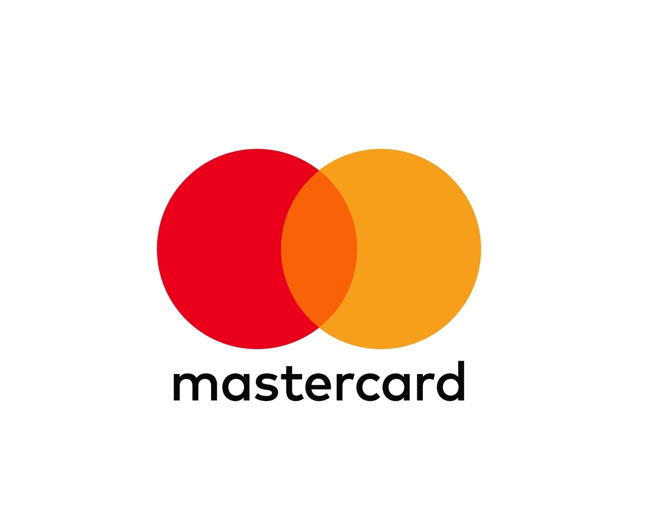As China’s economy begins to slow,
Western banks which took equity stakes in leading Chinese banks are
looking to bolster their own capital bases by offloading their
shares. What will this mean for those banks with payment card joint
ventures in the country? Divya
Guha and Victoria
Conroy report.
In an interview which preceded Royal Bank
of Scotland’s (RBS) investment in China, John Shelley, a senior
executive at RBS expressed his enthusiasm for gaining a stake in
the Chinese banking sector.
“This is not a short-term game, but it’s
tremendously exciting, a huge opportunity for the banks that can go
about it in an organised way,” he said. These words have returned
to haunt him just over three years later.
China, the world’s third-largest economy, was
at one time something of an exclusive members’ club – thanks to the
government’s policy of keeping foreign banks out of the
marketplace.
For years, entry was denied to eager Western
banks desperate to partake of the country’s economic boom, which
only made them lobby the country’s government even harder, wooing
regulators and promising to abide by the rules should they be
fortunate enough to be admitted.
Eventually the Chinese government relented and
a select few banks were allowed to buy minority stakes in
commercial Chinese banks, setting up joint ventures in the fields
of payment cards, retail financial services and commercial banking
with assurances of strategic partnerships and risk management
assistance.
How well do you really know your competitors?
Access the most comprehensive Company Profiles on the market, powered by GlobalData. Save hours of research. Gain competitive edge.

Thank you!
Your download email will arrive shortly
Not ready to buy yet? Download a free sample
We are confident about the unique quality of our Company Profiles. However, we want you to make the most beneficial decision for your business, so we offer a free sample that you can download by submitting the below form
By GlobalDataWestern high-rollers such as Citi, HSBC, Bank
of America, RBS and ING were just some of the banks that eagerly
took their place at the table. Payment cards were a key priority
for growth, given that China has one of the fastest-growing
consumer markets in the world which offered incomparable
potential.
These acquisitions, mostly made in 2005 and
2006, provided the means for China to exchange capital and
expertise for product launches, marketing, information technology
and risk management to help its largely underdeveloped banking
sector. Today, after the sale of the stakes, the Chinese regulators
may be wondering if this ‘love me then leave me’ attitude of the
Western banks should be tolerated.
So far, none of the cards and payment joint
ventures have been completely dismantled – but the world looks very
different in 2009 to the way it was in 2005.
Slowing market expansion
Even though the Chinese payment market lags
behind the US and the UK, the Chinese card acceptance environment
is improving in most big cities. The global economic downturn
intensified in 2008, and Chinese consumer spending has slowed while
issuers’ marketing costs remain high.
The debit card market seems to be quickly
approaching saturation too, with growth rates slowing down rapidly.
Experts also predict the credit card delinquency rate, which has
risen sharply, could double in 2009. Regulators have warned issuers
of the rising risks, and new cards are being distributed with
greater caution.
Providers are now gearing towards servicing
their existing card accounts more carefully as the country enters a
new phase of development, one in which risk control and planned
growth become key. Analysts say that though the market will
continue to grow, the pace will slow down.
“This may not be a bad thing after all,” says
principal analyst Terry Xie, of Mercator Advisory Group, speaking
to CI. “The economic slowdown might be a disguised
blessing to the development of China’s credit card industry. There
is little question that it would further delay the whole industry
from breaking even. Nonetheless it provides an opportunity for
Chinese credit card issuers to slow down their pace and re-examine
their developments, and possibly rethink their growth strategies
before the problem becomes too big.”
Amid the ongoing downturn, foreign banks that
have been hit hard by the credit crunch are desperate to shore up
their balance sheets. Some viewed the price of membership to the
Chinese banking club as being far too steep for them to continue
paying their dues and sold up.
The Chinese economy is beginning to look
increasingly unhealthy, said Wu Yonggang, an analyst with Chinese
brokerage Guotai Junan, to the Financial Times: “The Chinese stock
market is in a terrible situation right now and if all the big
foreign investors are running away from the banks, then that would
hurt confidence even more and the government would not be keen to
see that happen.”
Reasons for leaving
There are several factors driving the full or
partial exit of Western banks from China, with the well-documented
cash-strapped state of Western banks likely to be a prime
concern.
Although it remains a formidable economic
power, China’s economy is starting to show signs of cooling and it
is a possible Western banks want to jump ship before things get any
worse.
Rising bad debts are another worry. Chinese
banks have already raised provisions against bad debts in the
fourth quarter of 2008, but asset quality is likely to slump
further in coming months. With interest earned on loans and credit
cards comprising upwards of 70 percent of Chinese banks’ operating
income, according to global credit ratings agency Fitch, credit
risk continues to represent the single largest threat to Chinese
bank performance as the economy weakens and puts more pressure on
borrowers.
A spate of interest rate cuts by the central
bank (five times in 2008) means that Chinese lenders in 2009 will
be less well off than in recent years, with earnings reduced to
single-digit growth ranges. However, Fitch cautioned that this
decline will take significantly longer than expected to show up in
loan quality data, due to features regarding the way loans are
extended and classified in the country.
The agency highlighted that the financial
strength of China’s largest banks has improved noticeably in recent
years, in tandem with falling non-performing loan (NPL) ratios,
rising loan loss provisioning, and substantial capital raising. In
October 2008, the China Banking Regulatory Commission reported that
Chinese commercial banks had an overall NPL ratio of 5.49 percent
at the end of September 2008, down 0.67 percent from the beginning
of the year. NPLs of commercial banks amounted to CNY1.27 trillion
($186 billion) at the end of September, a decrease of CNY3.02
billion since the start of 2008.
Though current levels of loan loss reserves
and capital (better than at any point during the reform era) may
overstate the degree of future asset-quality deterioration, the
country’s banks are able to withstand this climate, according to
Fitch. The report stated that “as we look into 2009 and 2010, it is
clear that Chinese banks’ exposure to credit losses is rising, but
exactly when and how this will manifest itself clearly in financial
data is less certain.” Fitch added that NPL ratios could remain
steady or even decline in the short term, but the overall outlook
hinges also on the quality of data and reporting from Chinese
banks.
However, rival credit ratings agency Standard
& Poor’s warns that NPL ratios may rise by as much as 204 basis
points in 2009, due to an economic stimulus package from the
country’s central bank, People’s Bank of China (PBoC) which could
lead to declines in revenue and margins.
Consultancy KPMG also reports that many
foreign lenders have failed to develop sufficient local controls
over their joint ventures with Chinese commercial banks as they
underestimated the financial commitment involved in entering the
country’s market. Also as the economic outlook darkens, Western
banks are likely to see more impasses if more regulation rather
than less is put into place.
A too hasty retreat?
The Chinese are also likely to suffer from the
Western banks’ reduced incentive to continue with current levels of
co-operation and investment, and they have hinted that this
desertion is not one they will forget easily. It will not be easy
for foreign banks to fall back in favour should they decide to
return, once they have taken care of business at home. They may
have to pay significantly higher prices the second time around,
leaving them at a disadvantage to their peers who remained in the
country.
“If a foreign bank sold off all its shares in
Chinese banks at this hard time, that would certainly complicate
any of their future efforts to re-enter the market. Regardless of
the reasons for the selling, it looks bad to Chinese banks and
foreign banks might have to eat up the costs of losing trust among
Chinese banks and the regulators, which could be expensive,” Xie
told CI.
According to the central bank, the People’s
Bank of China (PBoC), in the third quarter of 2008, outstanding
credit lines of credit cards stood at CNY891.04 billion, a rise of
70.9 percent compared to the same period in 2007, and 3.5 times as
much as that of the same period of 2006. This means China is still
fertile ground, offering plenty of room for growth for western
banks with the stamina to stay the course.
Two years on, foreign banks who may seek to
return may have to fight for their niche and face tough competition
from the much more experienced Big Four in the domestic market.
Prominent card
partnerships
RBS and Bank of China
(BoC)
RBS and BoC established their credit
card joint venture in early 2007, co-operating in product design,
direct selling, risk management and information technology, rolling
out a range of functionally-enhanced credit cards.
Financial results from BoC show that
the joint venture has been a success for both partners, immediately
following the launch of the business.
By the end of 2007, BoC had issued 11.4
million credit cards, with core features such as EMV and automatic
repayment functions being added to offerings. By June 2008, BoC had
issued nearly 14 million credit cards.
On 14 January 2009, RBS announced its disposal
of its 4.26 percent equity for £1.6 billion, selling 10.8 billion
shares, having first purchased a 10 percent stake in August 2005.
However, RBS will still operate its network of 20 branches in
conjunction with ABN AMRO, and will continue to operate in the
areas of retail and commercial banking and wealth management.
When contacted by CI, an RBS
spokeswoman said that no decision had been made regarding its
continued involvement with its credit card joint venture with BoC,
only that following the sale of its stake, the two banks were in
“ongoing” discussions regarding the future direction of the
venture, and that no timescale had been put in place relating to
any decision regarding its continued existence.
HSBC and Bank of
Communications (BoComm)
HSBC and BoComm established their
joint venture in 2005, with HSBC providing technical support in
business operations and concepts, management tools and product
marketing and development.
By the end of 2005, they had gotten
657,000 cards into the Chinese marketplace, with that figure rising
to 3 million by the end of 2006 and to over 5 million by the end of
2007. By mid-2008 that figure had increased to over 7.7 million
cards, with total consumer spending amounting to RMB38.5 billion by
mid-2008.
HSBC may be in a stronger position than its
peers thanks to its diversified asset base and already-healthy tier
1 capital ratios, and so this far it has not needed to raise
capital through share offerings or divestitures of assets. In a
mid-2008 investor presentation, HSBC stated that organic growth in
China remained a key priority, along with deepening strategic
partnerships already in place.
“HSBC considers China a more important part of
its longer term strategies and they don’t want to change that for
now,” Xie explained.
It has the largest foreign bank network in
China with 75 branches as of September 2008, and plans to increase
that number over 2009. Given its extensive presence in China and
its relative good financial health, it is unlikely that HSBC, with
its deep roots in the Asia-Pacific region, will be looking to exit
the Chinese market any time soon.
When contacted by CI, an HSBC
spokeswoman said that the bank had no plans to divest its stake in
BoComm, and that it would be continuing its credit card joint
venture.
Bank of America (BofA) and
China Construction Bank (CCB)
BofA and CCB established their
credit card joint venture in April 2007, and have since set up
sales and service processes for high net worth customers, completed
IT planning and data governance and scorecard procedures. A leading
player in credit cards, CCB had boosted its credit card issuance
numbers to 15.6 million by mid-2008, compared to 4.47 million in
2005, and 6.34 million in 2006.
In 2007, CCB set up 32 ‘experience sharing’
projects with BofA, including a credit card joint venture and
retail branch transformation. The implementation of scoring cards
for mortgage lending and credit cards has enabled the bank to grant
automatic approval of credit card applications, and to proactively
adjust the credit limits of cardholders.
BofA offloaded 13 percent of its stake in CCB
in early January 2009, having invested $3 billion in 2005 and
subsequently increasing its share, paying $7 billion in November
2008 to increase its stake to 19.1 percent, the maximum stake
allowed by the Chinese government.
BofA made a profit of around $1.1 billion from
the sale of its Hong Kong-listed CCB shares, reducing its stake in
the Chinese bank from 19.1 percent to 16.6 percent. In mid-December
last year, the bank announced it planned to sell $2.8 billion of
its shares.
However, BofA’s decision to sell was rumoured
to have dismayed the Chinese government. The intended sale fell
under the Chinese Securities Law which prohibits investors holding
more than 5 percent of the shares of a local, publicly-traded
company from selling their shares within six months from the date
of purchase.
BofA’s dominance of the US credit card market
(with over 70 million accounts at the end of 2008) could expose it
to massive credit losses over 2009.
It also needed to fund its $33 billion
acquisition of Merrill Lynch. BofA went ahead with the partial CCB
stake sale. In response, CCB said that BofA sold its shares because
of its “financial situation”, stressing that both banks would
continue their strategic partnership and continue to co-operate in
all business areas.
American Express and
Industrial Commercial Bank of China (ICBC)
American Express bought into ICBC in
mid-2005 as part of a consortium, having had a
previously-established card alliance agreement with the bank
stretching back to 2004.
Amex’s expertise in the fields of innovation,
co-branding and segmentation helped ICBC to issue 23.4 million
credit cards by the end of 2007, with spending reaching RMB161.9
billion. ICBC also tapped overseas institutions to issue cards as
agents, with a view to expanding outside China. By mid-2008, card
numbers had reached 33 million, and CNY110 billion in
consumption.
A sharp rise in cardholder defaults in the US
market has obliged Amex to turn to the US TARP programme for extra
capital, and with US unemployment rates skyrocketing, Amex is
braced for even bigger credit losses in 2009. With this in mind,
rumours are swirling that Amex is planning to sell its stake in
ICBC when its lock-in period expires at the end of April 2009,
which would return around $500 million into Amex’s coffers. But
Amex told CI that they had not expressed any plans for the
ICBC investment and refused to comment on market speculation.
An Amex spokeswoman said: “ICBC is a key
partner, and our partnership started in 2004 with the launch of the
ICBC American Express Card – the first American Express-branded
card in China. Since then, we have successfully introduced a broad
array of consumer, corporate and co-brand cards with strong value
propositions.”
Citi and Shanghai Pudong
Development Bank (SPDB)0
Citi and SPDB teamed up in 2005 to
launch their credit card operation, in that year issuing 200,000
cards, rising to 500,000 by the end of 2006 with spending of CNY5.1
billion. By the end of 2007, SPDB had issued 1.67 million credit
cards, with spending amounting to CNY11.9 billion.
Despite the 3-year lock-in period expiring in
December 2008, SPDB stated in early January 2009 that Citi had no
plans to sell its stake. For its part, Citi would only comment that
its partnership with SPDB remained strong and that it looked
forward to developing the partnership going forward for the mutual
benefit of both parties. However, Citi’s recently-announced
restructuring and its continued bad run of financial results make
it look likely that Citi will divest its stake at the earliest
opportunity.
|
China |
|||
|
Chinese equity stakes |
|||
|
Chinese bank |
Foreign investor |
Stake |
Cost ($m) |
|
Industrial and Commercial Bank of China |
Goldman Sachs, American Express, Allianz |
10 |
3,800 |
|
China Construction Bank |
Bank of America |
10.75 |
4,369 |
|
Bank of China |
RBS |
5 |
1,600 |
|
UBS |
1.6 |
500 |
|
|
Asian Development Bank |
0.24 |
75 |
|
|
Bank of Communications |
HSBC |
19.9 |
2,027 |
|
Bank of Dalian |
Bank of Nova Scotia |
19.99 |
not disclosed |
|
Shanghai Pudong Development Bank |
Citigroup |
3.78 |
67 |
|
Huaxia Bank |
Deutsche Bank |
13.7 |
879 |
|
Sal Oppenheim |
4.08 |
not disclosed |
|
|
Industrial Bank |
Hang Seng Bank |
12.78 |
208 |
|
Guangdong Developmnet Bank |
Citigroup |
20 |
3,100 |
|
Bank of Beijing |
ING Group |
16.07 |
215 |
|
Bank of Shanghai |
HSBC |
8 |
63 |
|
Shanghai Commercial Bank |
3 |
23 |
|
|
Bank of Nanjing |
BNP Paribas |
12.6 |
87 |
|
China Bohai |
Standard Chartered |
19.99 |
123 |
|
Bank of Hangzhou |
Commonwealth |
19.99 |
78 |
|
Asian Development Bank |
4.99 |
30 |
|
|
Xi’an City Commercial Bank |
Bank of Nova Scotia |
1.4 |
20 |
|
Ping An Bank |
HSBC |
27 |
n/a |
|
United Rural Co-operative Bank of Hangzou |
Rabobank |
10 |
31 |
|
China Everbright Bank |
Asian Development Bank |
2 |
20 |
|
Bank of Tianjin |
ANZ Bank |
19.9 |
120 |
|
Shanghai Rural |
19.9 |
263 |
|
|
CITIC Bank |
BBVA |
5 |
635 |
|
Mizuho |
0.18 |
51 |
|
|
Urumqi City Commercial Bank |
Habib Bank |
19.9 |
n/a |
|
Jilin Bank |
Hana Bank |
19.7 |
327 |
|
Bank of Qingdao |
Intesa Sanpaolo |
19.9 |
137.5 |
|
Rothschild Bank |
5 |
34 |
|
|
Xiamen International Bank |
Asian Development Bank |
10 |
10.3 |
|
Shinsei |
10 |
10.3 |
|
|
Changsa City Commercial Bank |
Groupe Banque Populaire |
20 |
29 |
|
Qingdao International Bank |
Hana Bank |
72.3 |
25 |
|
Jinan City Commercial Bank |
Commonwealth Bank of Australia |
11 |
17 |
|
Nan Tung Bank |
Morgan Stanley |
100 |
n/a |
|
Bank of Chongqing |
Dah Sing Bank |
20 |
87.5 |
|
Yantai City Commercial Bank |
Hang Seng Bank |
20 |
111 |
|
Wing Lung Bank |
4.99 |
28 |
|
|
Bank of Chengdu |
Hong Leong Bank |
20 |
261 |
|
Source: CI |
|||







